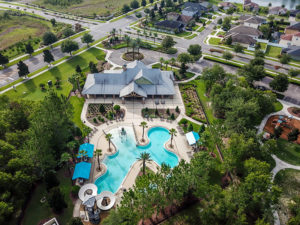A homeowners association would be nothing without its homeowners. Thus, when there are properties available, an HOA should do its best to seek out new homeowners to live in the community. But, how do you even begin to do that?
Why HOAs Need New Homeowners in the Community
Homeowners associations exist to serve their members — the homeowners — and rely on these very members for funds to run the community. When there are unowned properties in the association, the HOA board should find ways to attract potential new homeowners to move in. Why?
For one thing, new homeowners bring much-needed cash flow into the association. As explained, HOAs charge owners regular dues to pay for the various expenses associated with managing the community. This includes maintenance costs, landscaping costs, management fees, insurance premiums, utility costs, and the like.
When there are too many unoccupied properties in an HOA, it results in a budget deficit. This will force the HOA board to charge other homeowners higher dues, essentially shouldering what should have been charged to owners of the vacant homes.
New homeowners also give life to the neighborhood. If your HOA has a total of 50 homes and, say, only half is owned and occupied, the community can feel rather empty. This can impact how other owners feel about living in the HOA. Pretty soon, they will be packing up and moving to a much more vibrant neighborhood, leaving yours a shadow of a community.
How to Attract New Homeowners
The final decision will always rest in the hands of the homebuyer. But, that does not mean HOAs can’t do anything to influence their decision. If you want to attract new homeowners, here are the best ways to do it:
1. Maintain a Pleasing Appearance
 People judge with their eyes first, so it makes sense to keep your community beautiful. Improving curb appeal not only helps invite more potential homebuyers but also contributes to the preservation of property values.
People judge with their eyes first, so it makes sense to keep your community beautiful. Improving curb appeal not only helps invite more potential homebuyers but also contributes to the preservation of property values.
A good way to create a more enticing and welcoming appearance is to use landscaping. You can do this yourself or, better yet, hire a professional landscaper to do the job for you. Make sure to look for a trusted vendor, though.
You can also establish a community garden where owners can grow plants such as flowers or even herbs. This hits two birds with one stone as it encourages participation and boosts appeal at the same time. Having a greener neighborhood can also reduce pollution, lower energy costs, and contribute to cleaner air.
2. Offer Convenience Using Technology
While there is no shame in sticking to the old ways, an HOA that uses modern technology to offer convenience to its members is far likelier to attract new homeowners. When a buyer is faced with the option of either paying their dues by traditional mail or paying their dues online, they will almost always choose the latter. It’s all about the experience.
Thus, if you have yet to do so, your HOA should consider adopting technology in each aspect of community management. For instance, you can invest in an HOA website with a resident portal where members can pay their dues, access important documents, send in complaints, submit requests, and manage their accounts. A website can also allow neighbors to communicate with each other through forums and chat functions.
3. Organize Open Community Events
Homeowners associations are no stranger to community-wide events. But, if you want to bring in new homeowners into the HOA, consider opening these events to outsiders as well.
Inviting non-members to attend your events is a great way to introduce them to the community. They can mingle with residents and get a taste of what it is like to be part of the association. If they like what they see, it won’t take much to nudge them in the right direction. You can even assemble a committee or task an existing one to organize an event that will specifically help attract new residents.
4. Be Pet-Friendly
In the United States, 67 percent of households own a pet. That is the equivalent of 85 million families. To most people, pets are family, and they would rather choose a community that welcomes pets rather than prohibits them.
Of course, there are risks associated with pets, too. As such, HOAs must find the right balance between pet ownership and restrictions. Here are a few tips you can use to promote a pet-friendly yet clean neighborhood:
- Make sure residents know that they are responsible for their pets. They must pick up after their pets and follow the community’s rules when it comes to their furry friends.
- Require residents to keep their dogs on a leash or a cage when outside the house at all times.
- Only allow pets in certain common areas. Schedule regular cleanings of common spaces where pets are allowed.
- Hire a professional pet waste management company.
5. Emphasize Efforts to Reduce Utility Costs
Utility bills are often a pain point for homeowners because they can be very high, especially during particular seasons. But, when your HOA is actively trying to reduce utility costs, it can convince a homebuyer enough to choose to move in. Let potential homeowners know that your HOA is committed to saving on utilities. You can communicate this through your HOA website or newsletter.
Here are some tips to help you lower your utility bills:
- Invest in sustainable and quality landscaping such as plants that don’t need a lot of water.
- Install energy-efficient lights and turn them off when not in use.
- Set sprinklers to go off on a timer.
- Update your irrigation system.
How to Retain New Homeowners
To be a truly successful HOA, you can’t simply focus all your efforts on attracting new homeowners. Your board must also work hard to keep new and existing members. All of the above methods apply, but here are a few additional tips to retain homeowners.
1. Provide a Welcome Packet
 Once new homeowners move into the community, your HOA must do its best to make them feel welcome. Even something as simple as providing a welcome packet or a new homeowner checklist can make a big difference.
Once new homeowners move into the community, your HOA must do its best to make them feel welcome. Even something as simple as providing a welcome packet or a new homeowner checklist can make a big difference.
At the very least, your welcome packet should include the following:
- A letter welcoming the new resident into the association;
- A copy of the association’s governing documents;
- All necessary association forms;
- Information regarding homeowner dues and fees;
- The contact details of all pertinent personnel and facilities (board members, HOA manager, local police, hospitals, poison control, utility companies, etc.);
- A list of amenities available to residents; and,
- The calendar of community events.
2. Communicate
Your HOA board should maintain an open line of communication with your residents. This means keeping them up-to-date on all community goings-on. Make sure your board provides homeowners with sufficient notice of meetings, dues, and other matters. If there are new policies or important announcements, disseminate the information in a timely and effective manner.
3. Be Responsive
Homeowners need to feel that they can easily reach out to your board and have their concerns heard. When your board keeps to itself and fails to respond to residents, it can negatively impact their experience in the community. You don’t have to fix their problem the moment you get word of it; but, you should definitely let them know you’ve received their concern and are looking into it.
4. Host Social Events
Emotional experience has a huge influence on how people make decisions, especially when it comes to choosing a neighborhood. One of the ways you can foster emotional equity is to host social events in the community.
Social events encourage participation and connection. It is at these events that neighbors can get to know each other, have fun, and perhaps build real relationships.
When planning social events, make sure to tailor them according to your community’s demographic and interests. Consider asking residents for input by holding a poll. Once you decide on an event, plan it out.
Don’t forget to account for details such as the time and place, the venue, any food and drinks, activities, and the like. Lastly, make sure to publicize the event early on so residents can make time on their schedule.
5. Ask for Feedback
It’s hard to know whether your board is on the right track when you’re too confined in your own space. This is why getting feedback from new and old homeowners alike is a must.
When you actively ask residents for their opinions on things they care about, they feel heard and important. This contributes to a positive emotional experience and can help you retain more owners in the long term.
6. Encourage Volunteers
Participation and connection are huge factors in cultivating emotional equity, and those are natural by-products when you encourage owners to volunteer in the community. Urge members to join committees or even run for a position on the HOA board. Even something as small as attending board meetings can make owners feel more invested in the association.
7. Put the Community First
 As a board member, you have a fiduciary duty to make decisions based on what’s best for the community. But, in addition to it being part of the job, this type of mentality and decision-making can help retain new homeowners. The logic here is simple — homeowners are less likely to leave an association managed by passionate leaders who always prioritize the community’s best interests.
As a board member, you have a fiduciary duty to make decisions based on what’s best for the community. But, in addition to it being part of the job, this type of mentality and decision-making can help retain new homeowners. The logic here is simple — homeowners are less likely to leave an association managed by passionate leaders who always prioritize the community’s best interests.
A Balancing Act
New homeowners add a lot of value to any community. Therefore, when there are properties available, your HOA should do its best to attract new residents. Once you have them, though, it is equally vital to know how to retain them.
Managing a community is not always an easy endeavor. If your board is struggling to keep up, perhaps it is time to hire an HOA management company like Cedar Management Group. Call us today at (799) 252-3327 or contact us online to learn more.
RELATED ARTICLES:
- What Should You Know Before Moving Into An HOA Community
- When An HOA Resident Dies, What Do You Do?
- Moving Out Of The HOA? Here’s What Homeowners Should Do






